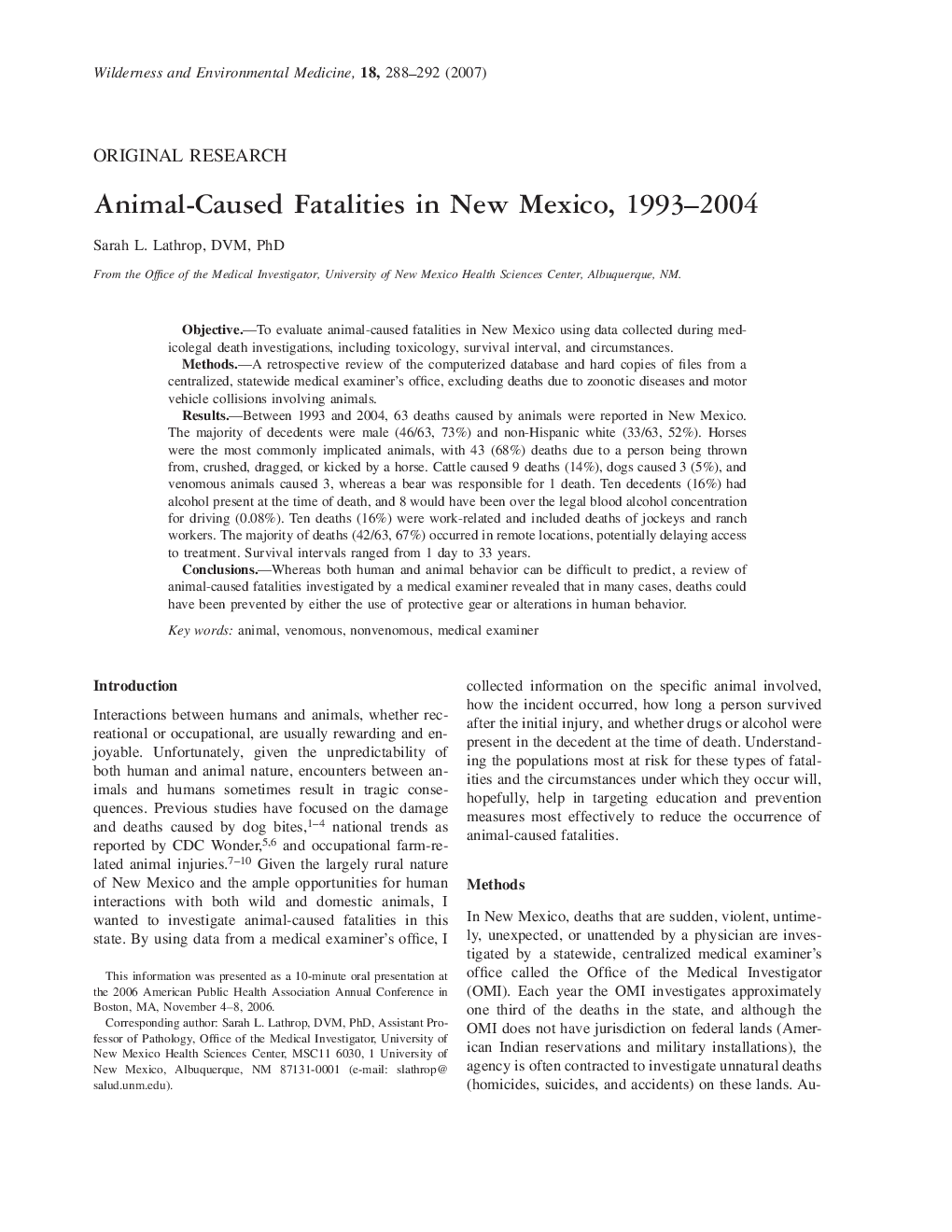| Article ID | Journal | Published Year | Pages | File Type |
|---|---|---|---|---|
| 2615412 | Wilderness & Environmental Medicine | 2007 | 5 Pages |
ObjectiveTo evaluate animal-caused fatalities in New Mexico using data collected during medicolegal death investigations, including toxicology, survival interval, and circumstances.MethodsA retrospective review of the computerized database and hard copies of files from a centralized, statewide medical examiner's office, excluding deaths due to zoonotic diseases and motor vehicle collisions involving animals.ResultsBetween 1993 and 2004, 63 deaths caused by animals were reported in New Mexico. The majority of decedents were male (46/63, 73%) and non-Hispanic white (33/63, 52%). Horses were the most commonly implicated animals, with 43 (68%) deaths due to a person being thrown from, crushed, dragged, or kicked by a horse. Cattle caused 9 deaths (14%), dogs caused 3 (5%), and venomous animals caused 3, whereas a bear was responsible for 1 death. Ten decedents (16%) had alcohol present at the time of death, and 8 would have been over the legal blood alcohol concentration for driving (0.08%). Ten deaths (16%) were work-related and included deaths of jockeys and ranch workers. The majority of deaths (42/63, 67%) occurred in remote locations, potentially delaying access to treatment. Survival intervals ranged from 1 day to 33 years.ConclusionsWhereas both human and animal behavior can be difficult to predict, a review of animal-caused fatalities investigated by a medical examiner revealed that in many cases, deaths could have been prevented by either the use of protective gear or alterations in human behavior.
